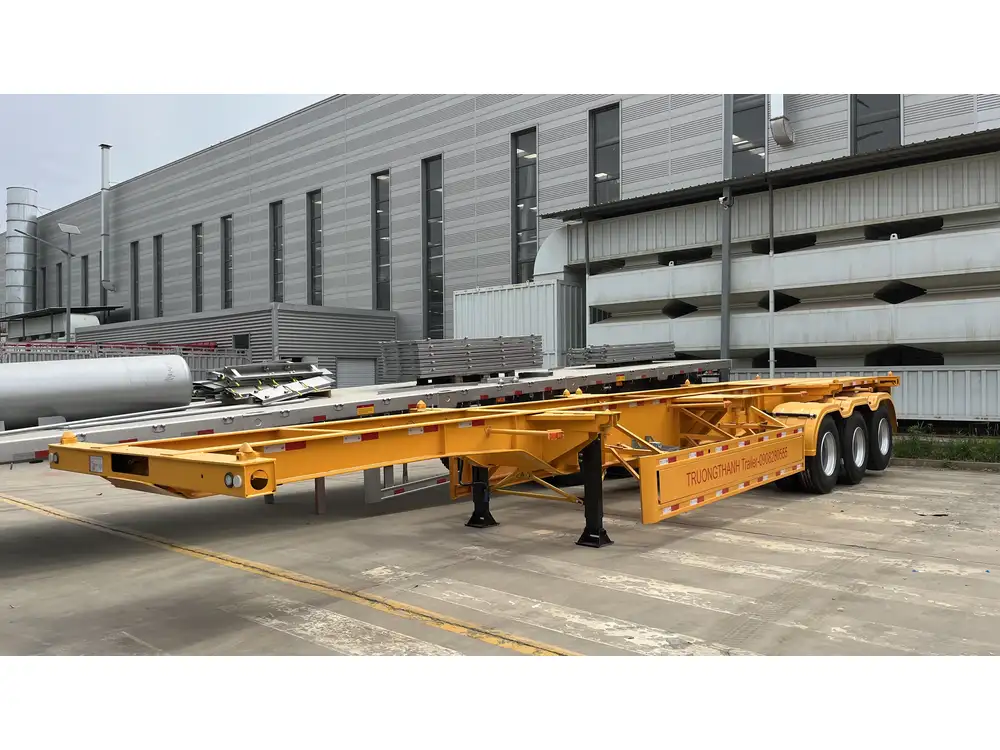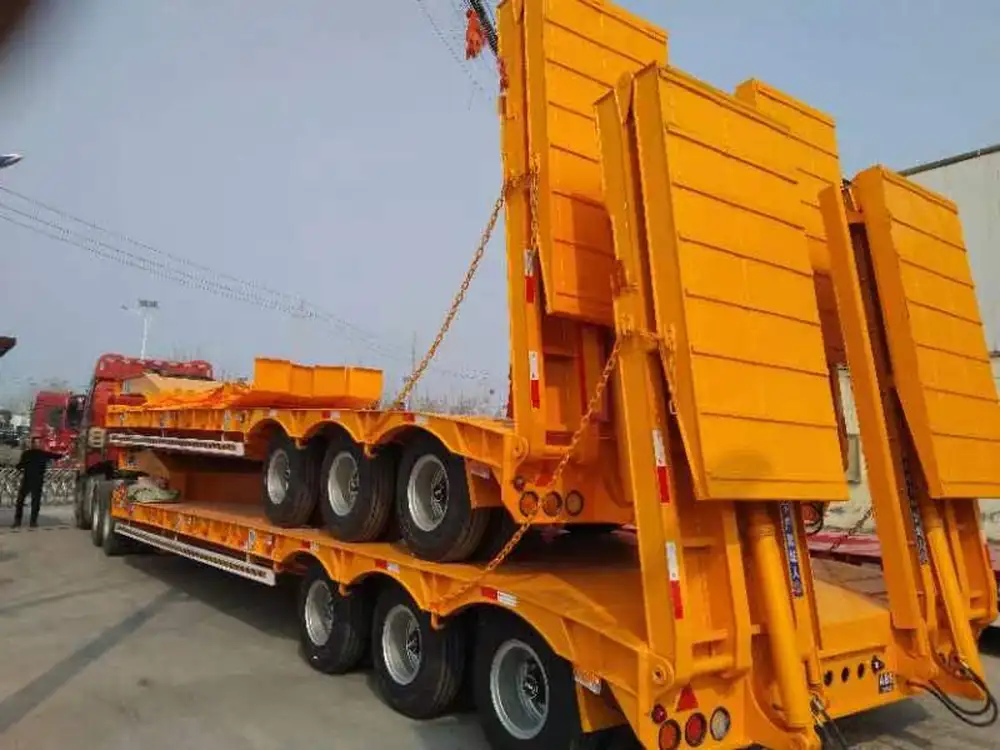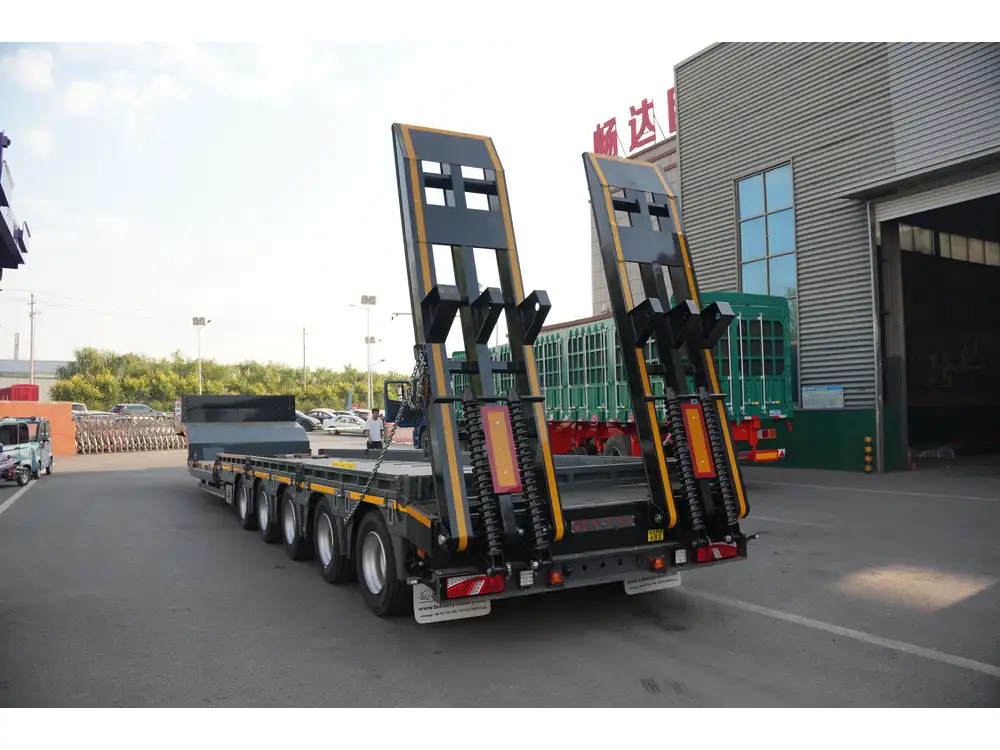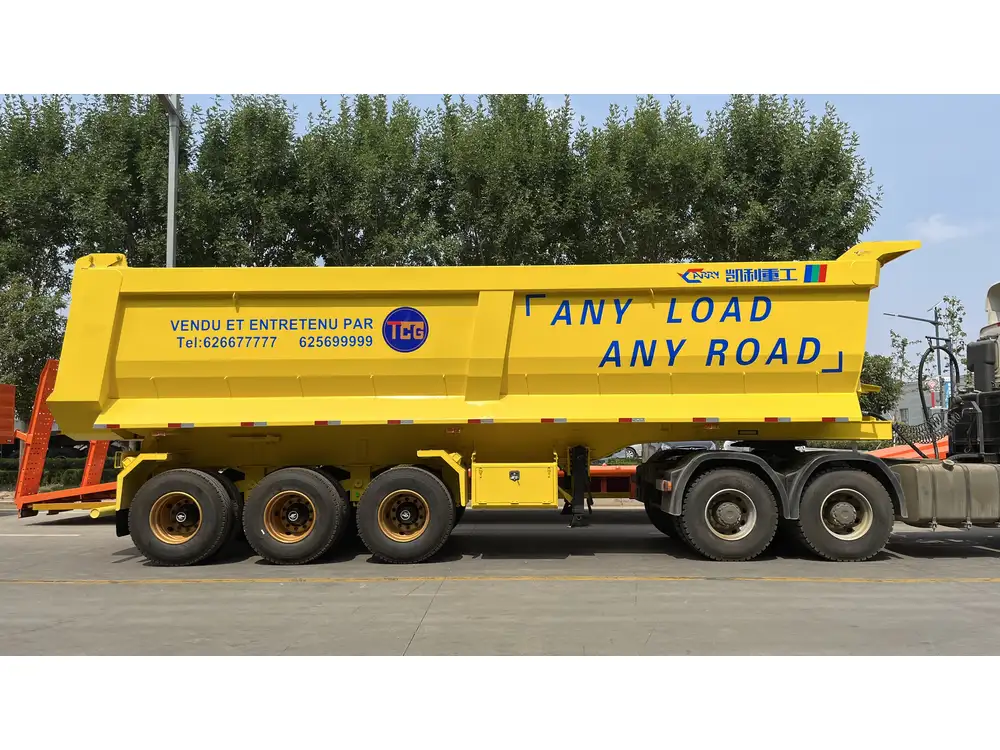When it comes to transportation and logistics, having accurate information about trailer specifications is crucial. One of the most commonly asked questions in the logistics community revolves around the weight of a 40-foot flatbed trailer. Understanding this metric not only helps in compliance with weight regulations but also informs decisions about load capacity, vehicle choice, and operational efficiency. In this extensive guide, we dissect the weight of 40-foot flatbed trailers, explore their types, factors affecting their weight, and much more to provide you with a comprehensive resource that enhances your knowledge and aids in strategic decision-making.
What is a 40-Foot Flatbed Trailer?
Before diving into specifics, let’s clarify what a 40-foot flatbed trailer is. As the name suggests, this type of trailer spans approximately 40 feet in length and is designed to transport various types of cargo, including heavy machinery, timber, and oversized loads. The flatbed design allows for easy loading and unloading from all sides, making it indispensable in many industries, including construction, shipping, and agriculture.
| Trailer Type | Length | Common Uses |
|---|---|---|
| Standard Flatbed | 40 feet | General freight, construction, etc. |
| Extendable Flatbed | 40 – 53 feet | Oversized loads, heavy equipment |
| Lowboy Trailer | Varies | Heavy equipment transport |
How Much Does a 40-Foot Flatbed Trailer Weigh?

Average Weight Range
The weight of a 40-foot flatbed trailer generally falls between 8,000 and 12,000 pounds (or 3,628 to 5,443 kilograms). However, this range can fluctuate based on various factors, which we will outline below.
Factors Affecting the Weight
Material Composition:
- Steel vs. Aluminum: Traditionally, flatbed trailers are made from steel, providing durability but adding weight. In contrast, aluminum trailers are lighter, often reducing the overall weight by several hundred pounds.
Design Features:
- Single Axle vs. Tandem Axle: Trailers with tandem axles provide better weight distribution and stability but may weigh more compared to single axle trailers.
- Deck Height: A higher deck can influence the construction technique and materials used, potentially affecting weight.
Additional Equipment:
- Toolboxes, Side Rails, and Accessories: Additional features such as built-in toolboxes and side rails can increase total weight.
Load Capacity:
- Trailers designed to carry heavier loads often utilize reinforced materials and structures, thus affecting overall weight.
Detailed Breakdown of Common Weights
Understanding how the different specifications of the trailer contribute to its weight can be valuable. Below is a detailed breakdown of typical weights based on common configurations:
| Configuration | Approximate Weight |
|---|---|
| Standard 40-ft Flatbed | 8,000 – 10,000 lbs |
| Aluminum 40-ft Flatbed | 6,000 – 8,000 lbs |
| Tandem Axle 40-ft Flatbed | 10,000 – 12,000 lbs |
| Low-Profile 40-ft Flatbed | 9,000 – 11,000 lbs |

Compliance and Legal Weight Limits
Navigating the legal landscape surrounding trailer weight is crucial for compliance and operational efficiency. In the U.S., federal law mandates a maximum vehicle weight of 80,000 pounds for trucks on interstate highways. However, the actual weight limit may vary by state, often influenced by road attributes and local regulations.
Weight Limit Considerations
Gross Vehicle Weight Rating (GVWR): This includes the weight of the trailer itself (tare weight) plus the maximum load it can safely carry.
Payload Calculations: Calculate your payload capacity by subtracting the trailer’s weight from the GVWR. If your trailer weighs 10,000 pounds and its GVWR is 40,000 pounds, your payload capacity is 30,000 pounds.
Permit Requirements: For loads exceeding standard limits, special permits might be required. Ensure compliance with state regulations to avoid fines.
Advantages of Choosing the Right Trailer Weight
Selecting the appropriate trailer and understanding its weight not only ensures regulatory compliance but also optimizes your transportation operations. Here are notable benefits:
Enhanced Fuel Efficiency: Heavier trailers may consume more fuel. Choosing a lightweight option can lead to significant savings over time.
Increased Payload Capacity: Knowing the exact weight enables you to optimize your load without exceeding legal limits, potentially increasing profitability.
Better Handling and Safety: A well-balanced load distributed among appropriately weighted trailers ensures better handling and reduces the risk of accidents.

Importance of Regular Maintenance
Maintaining your flatbed trailer is essential for both safety and longevity. Regular inspections can help spot issues that may add unnecessary weight or compromise performance. Here’s a checklist for essential maintenance tasks:
Tire Condition: Ensure that tires are properly inflated and in good condition to optimize handling and efficiency.
Brake System: Regularly check the brake system for wear and tear to ensure safe stopping power.
Frame Integrity: Inspect the trailer frame for signs of rust or damage, which can compromise structural integrity.
Lighting and Electrical Systems: Ensure all lights and electrical components are functioning to comply with safety regulations.
Load Securement Devices: Inspect chains, straps, and other load securement devices to prevent cargo loss or shifting during transport.
Frequently Asked Questions
What are the common uses for a 40-foot flatbed trailer?
Common applications include:
- Transportation of construction materials
- Hauling large machinery
- Delivery of lumber and other heavy goods

Is a 40-foot flatbed trailer worth the investment?
Yes, if you frequently transport large loads, a 40-foot flatbed trailer can save time and reduce logistical headaches. Its versatility makes it a great asset for various industries.
How can I calculate the total weight of my load?
To calculate the total weight, simply add the weight of your trailer (tare weight) to the weight of the cargo you intend to carry. Always ensure the total does not exceed your trailer’s GVWR.
Can I convert a traditional trailer to a flatbed trailer?
Converting a traditional enclosed trailer to a flatbed design is possible but requires specialized skills. It’s often more practical to purchase a flatbed trailer designed for optimal weight distribution and load management.

Conclusion
The weight of a 40-foot flatbed trailer plays a pivotal role in logistics, transportation management, and regulatory compliance. With accurate knowledge of your trailer’s weight and the factors influencing it, you can make well-informed decisions that enhance efficiency, safety, and legality in your operations. Ensuring compliance with weight regulations while choosing the right trailer can positively impact not only operational cost but also customer satisfaction, leading to sustained business growth.
For further inquiries or specific questions about choosing the right trailer for your needs, feel free to reach out for expert guidance tailored to your unique situation. Being informed is the first step toward optimizing your logistics strategy effectively.



